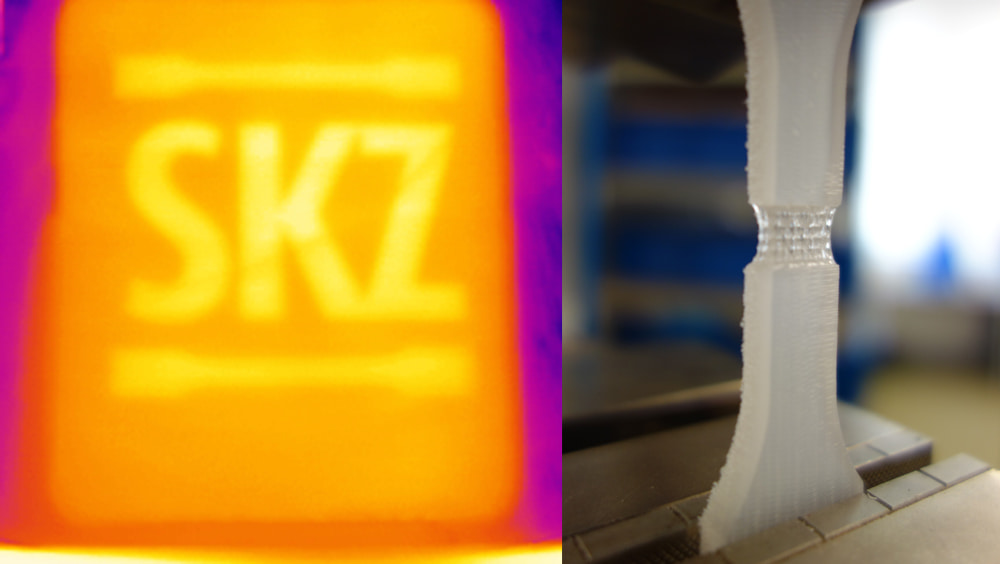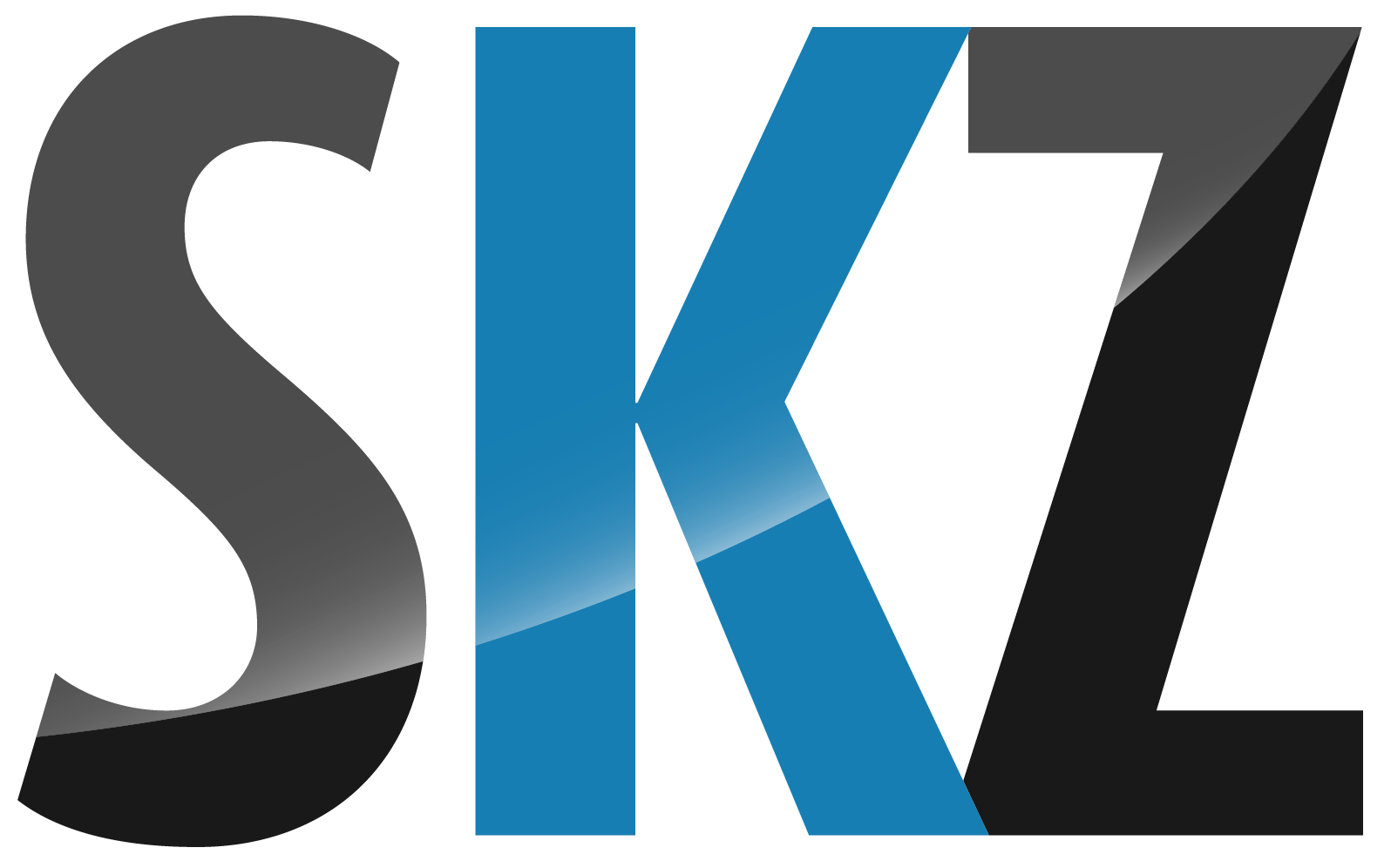Quality assurance of additively manufactured products through inline use of thermal imaging cameras
Sebastian Lulei, Scientist at the German Plastics Center SKZ and project leader for testing an inline inspection method for quality assurance of 3D-printed components is interviewed by SKZ podcaster Alexander Hefner.

The use of thermal imaging cameras on 3D-printed components is currently being researched at SKZ. (Foto: SKZ)
Sebastian Lulei answers questions on this exciting topic in an interview
Hefner: The project we want to talk about today is about thermography. Can you briefly explain what that is exactly?
Lulei: Thermography describes a measurement or testing method that can be used to visualize the surface temperature of an object. Most people are already familiar with the system used for this - the thermal imaging camera. It is used, for example, to check building facades for internal thermal bridges or to check plastic components for internal defects.
Hefner: Sebastian, in your project, this proven inspection method of thermography was transferred to 3D printing. The simple question first: Why does that make sense?
Lulei: Especially in the field of additive manufacturing, it makes sense to monitor component quality already during production, since the number of parts is very small and the product value is usually very high. In addition, many fields of application for 3D-printed parts are in the medical or other safety-sensitive areas. For example, in aircraft construction - i.e. where a small quantity but very individual or complex parts are required - a 100% inspection already in the process is always useful. Thermography is already used very successfully at SKZ for monitoring other processes such as injection molding, joining and extrusion. Here, SKZ even offers commercially available, self-developed systems including integration and maintenance to interested companies. A transfer to the application area of additive manufacturing was therefore obvious and very promising.
Hefner: What were the challenges and how did you go about it?
Lulei: First, we had to manage to introduce specific and reproducible flaws into the component through the printing process. For example, the FFF process was used to provoke internal blowholes or a lack of layer adhesion by varying the nozzle temperature or flow rate. We then referenced the intentional flaws using other non-destructive testing methods such as computed tomography, which you might be familiar with from your doctor. The first task was then to find a suitable position for the necessary thermal imaging camera in the first place, where the defects could be detected as well as possible. After all, it is very important to be able to locate the defect spatially and not just to know that something is going wrong during printing. Finally, we tried out various evaluation methods for the recorded data. In the end, the results were so promising that we are also considering commercialization in this field of application.
Hefner: So defects can be detected inline with thermography. Does that also apply if they have already been overprinted?
Lulei: As a matter of fact, yes. You then even have depth information and can locate the position of the defect in the component very precisely. The task now is to transfer the suitability of the process to the variety of different plastics.
Hefner: Would that be a possible expansion topic?
Lulei: Yes, definitely. However, especially with regard to the variety of materials, we are dependent on the industry to provide the materials, since many companies use very application-specific materials. In addition, we are currently researching evaluation methods based on artificial intelligence, since the amount of data generated during component printing is very large. Machine learning methods, for example, lend themselves to this. Initial approaches to this are very promising.
Hefner: Thank you very much for the interview, Sebastian.
Further informationen about research department non-destructive testing

